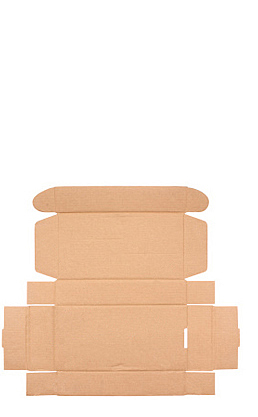Once a sheet of paperboard has been printed, the shape of the container created in the design phase is used to manufacture the cutting die.
Steel rule die cutting is a common process used to cut a range of sheet materials including paper, cardboard, rubber and plastic.
Most standard cardboard boxes and packages are made using this relatively straightforward technique.
In addition to cutting out shapes, steel rule die can be used to create creases, perforations and slits.
Die Cutting Explained
The die is constructed out of a flat base or substrate which is usually made out of high-grade and high-density plywood.
The plywood is usually composed out of hard woods such as maple and are free from voids or other imperfections.
Some special dies may require aluminum or steel substrates.
The die-maker uses a special band saw or laser cutter to cut precisely positioned slits into the substrate.
The steel rule itself is essentially an elongated razor blade made out of hardened steel.
The die-maker cuts and bends the steel rule and positions it into the slits in the substrate.
The final step in creating the die involves the addition of ejection rubber.
Rubber pads are adhered to the substrate to help eject the material after it is cut.
Without the inclusion of ejection rubber, the material may tend to get stuck amongst the steel rules.
The substrate, steel rule and ejection rubber combine to form a steel rule die.
Once the die maker has completed the steel rule die, it is immediately ready for production.
The die is attached to the top platen of a die cutting press that will provide the force required for the job.
Smaller presses may provide 20 tons (18,000 kg) of force, whereas larger ones give over 150 tons (135,000 kg)!
The material to be cut is positioned below the die and then the press is actuated.
If registration is an issue, the material is positioned against a stop or in a locating nest.
The cutting edges of the steel rule penetrate through the material until they come into contact with the bottom platen; then the press reverses and the cut part is exposed.
In some applications, a softer material is placed below the material to accept the cutting surfaces of the steel rule.
When cutting paper, however, the cutting is performed against special steels designed for the purpose.
Perforations and creases are made with special steel rule that is positioned on the same die as the cutting rule.
Creases sometimes require secondary dies called a matrix.
A matrix is positioned on the opposite side of the press and is aligned with the creasing rule; when configured properly very crisp creases can be created in all sorts of materials.
Sometimes heated platens are used when plastic parts are being fabricated to improve the quality of the creases and cuts.
In high-volume die cutting operations, fully automatic machines are used.
In these machines, the material to be cut is automatically fed into the press and located in the proper position.
The steel rule die is pressed through the material and the pressure is released.
The cut piece is removed along with any scrap material, and the next piece is indexed to repeat the process.



